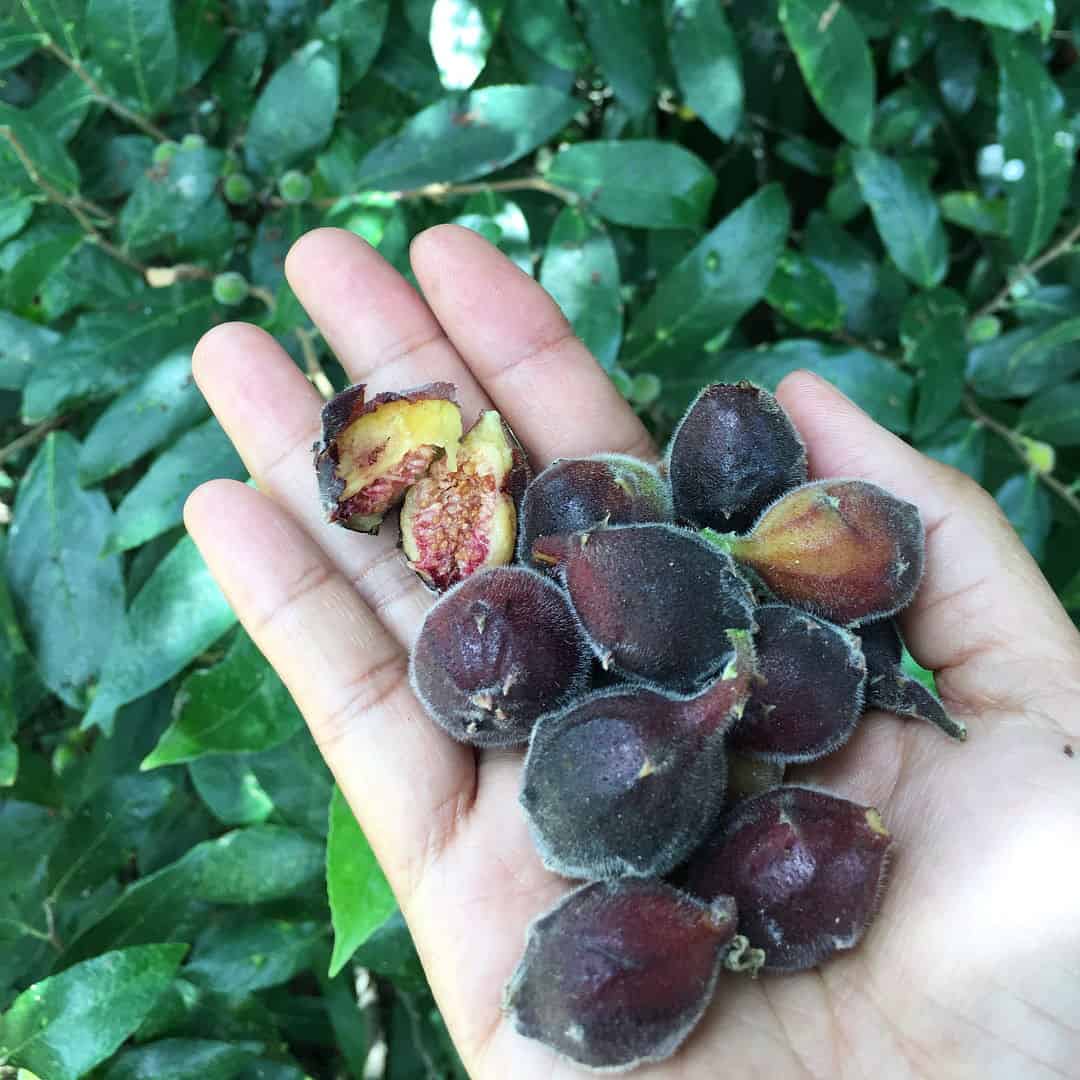Bushfood micro-forests (aka. micro-food forests) offer a sensory heaven for curious minds, and offer numerous health and developmental benefits to young, growing bodies. The best thing about planting one in your own backyard is getting to curate an environment that suits your whole family.
The right plants for a child-safe and family-friendly bushfood micro-forest will depend on several factors, namely food safety, environmental safety, and taste.
Food safety — choosing good backyard forage
“Partial safety” is a common quirk of many edible plants, like the potatoes and tomatoes you find in the supermarket, the leaves and stems of which contain alkaloids that are mildly toxic to humans. Likewise, some native bushfoods may bear safe and delicious roots and fruits, but also produce plant parts that upset tiny tummies.
Similarly, some plants are only considered safe to eat when prepared in a particular way. Warrigal Greens, for instance, must be cooked prior to eating, so as to break down the oxalates contained in the leaves.

The fruit of the Blue Lilly Pilly contains a hard seed. Toddlers and fast eaters may need supervision around this plant during the fruiting season.
When planning a micro-food forest for toddlers and fast eaters, you’ll also want to consider whether your favourite native fruit contains a choking hazard, such as the small but significant seeds in the Small-Leaved Tamarind and Blue Lilly Pilly.
That’s not to say these plants don’t belong in a family-friendly backyard — more that it’s worth considering how much supervision your child might need during certain months of the year.
Environmental safety — planting for peace of mind
As with any garden for kids to enjoy, it’s important to be mindful of any prickles, thorns, irritants and allergens within reach of tiny hands. The Sandpaper Fig, for example, produces delicious fruit your child can enjoy straight off the tree, but the milky sap contained in the plant stems are likely to trigger a latex allergy.

The Sandpaper Fig will leak a milky latex sap when its stems are broken. A great way to bond with young children is learning together which parts of the plant are edible and safe.
Likewise, as with many citrus trees and berry bushes, the Finger Lime and Atherton Raspberry are covered with prickles and thorns to defend their highly coveted fruit. For safety reasons, we recommend holding off until your kids get a little older, or until they learn to tell the difference between sharp and safe.
Taste — grow a food forest you’ll love
Finally, the all-important taste. For many, this factor will determine whether your micro-forest will thrive or get left to wither. Take the Native Leek, for example. If your family has an aversion to onion-y flavours, this pretty plant will only ever offer limited enjoyment. Edible gardening, while rewarding, is only worth the effort if you get to enjoy the fruits of your labours.
Varying levels of motivation for gardening may be worth considering too. There’s a season for everything, and plants that require more maintenance — like heat-loving Native Lemongrass in a cold climate — may end up suffering from neglect when interest wanes or life gets busy. If your lifestyle is prone to such ups and downs, you’ll have an easier, more convenient time in the garden with lower-maintenance, beginner-friendly plants that match the climate where you live.

While you can successfully grow a WA Samphire in a cooler area, it requires less effort to maintain in a warmer climate
Recommendations for a family-friendly micro-food forest
To get you started, here are a few suggestions for planning your bushfood micro-forest, based on the age of your youngest child. We’ve considered some of the basic food and environmental safety factors, however we do not take into account food allergies, contact allergies and individual preference.
Age 0-4
Shrub Layer
Age 5-8
Tress Layer
Those above for younger children, plus…
Illawarra Plum
Small-leaved Tamarind
Large Leaf Tamarind
Bolwarra
Shrub Layer
Those above for younger children, plus…
Herb Layer
Those above for younger children, plus…
Red Back Australian Ginger
Warrigal Greens
Ruby Saltbush
Chocolate Lily
Bloodroot
Muntries
Age 8+
Tress Layer
Those above for younger children, plus…
Shrub Layer
Those above for younger children, plus…
Herb Layer
Those above for younger children, plus…
Please note: Our plant recommendations are of a general nature. We strongly advise doing additional research regarding health and safety factors specific to your child and home.




